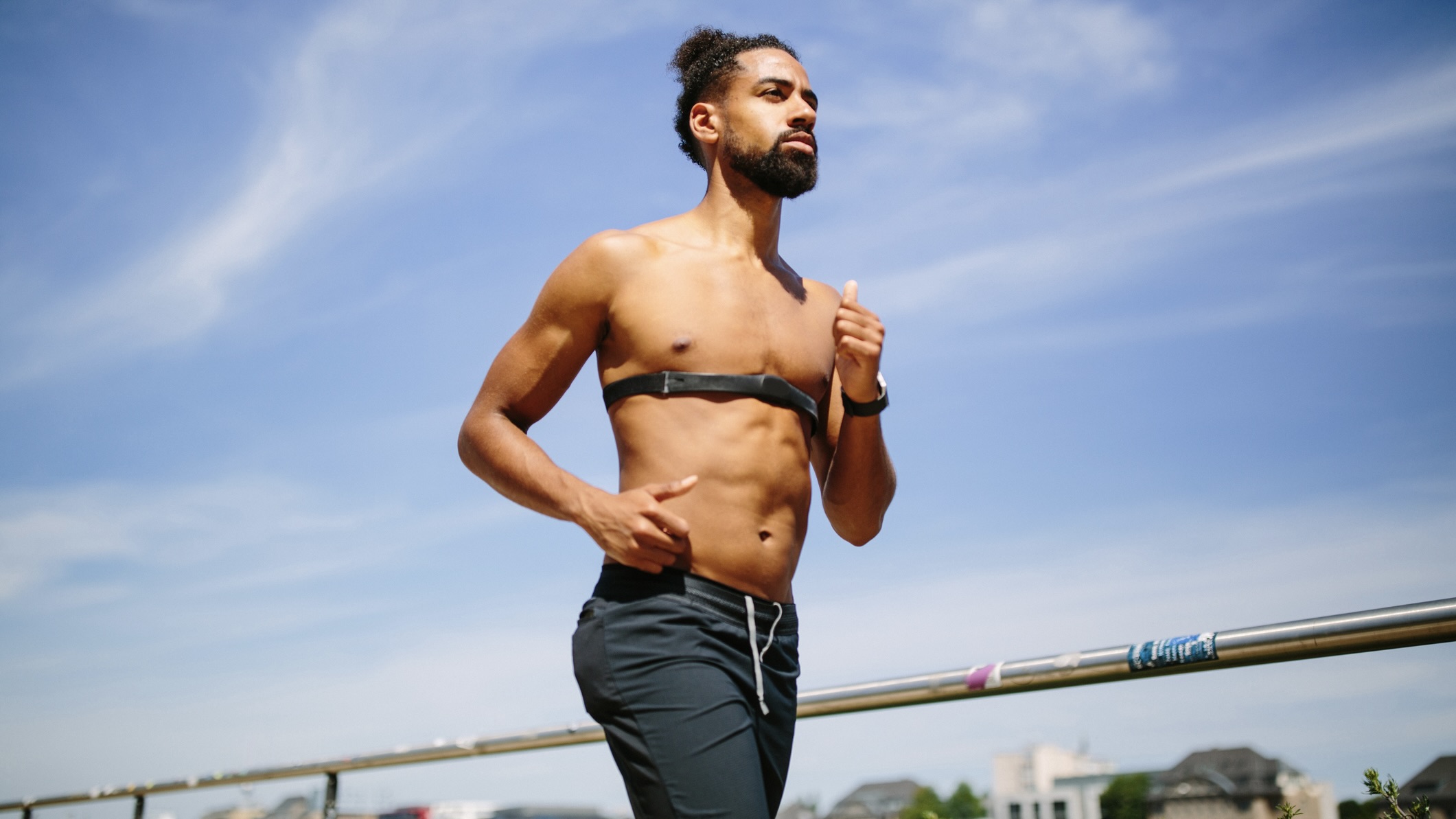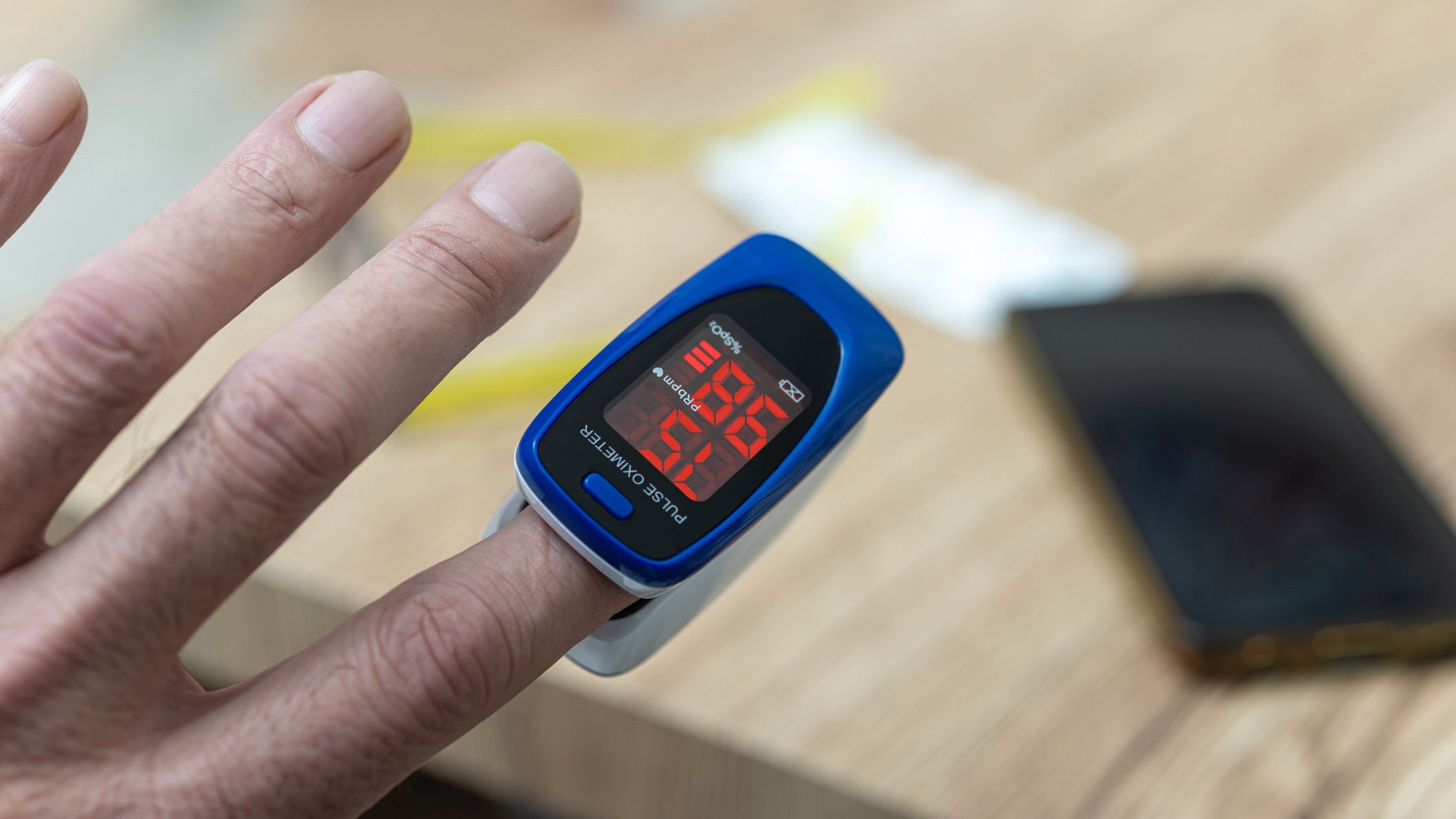What type of heart rate monitor do you need? We explore all the options
Find out how different heart rate monitors work, their pros and cons, and how to choose the right one for you

Your heart rate can tell you a lot about your body, including how well adapted it is to running, how hard you're working during a training session, and how well you're recovering afterwards. There are lots of different devices to do the job, including watches, armbands, and chest straps, but what's the difference between them all, and how do you choose the right one for you?
We're here to help explain all the key differences between the various types, weigh up the pros and cons, and help you pick the one that will work best for your type of training. We're focusing on running here, but a lot of the advice will transfer to other sports as well.
What do heart rate monitors do?
As the name suggests, heart rate monitors are devices that detect and log how fast your heart is beating.
When you’re doing an aerobic activity such as trail running or hiking, your heart rate increases with effort. Strategic training within different heart rate zones will help you to improve your performance when you run, so you can go faster and further.
Other uses of heart rate monitors include monitoring stress, tracking sleep quality and monitoring your vital signs, especially if you have health concerns.

Some heart rate monitors measure the tiny electrical impulses created as your heart beats, while others track your pulse. Pulse rate is how many times per minute the arteries expand because of your beating heart. There should be no difference between the heart rate and pulse rate, but some health conditions, medications and activities (particularly those that involve gripping with your hands) can make it more difficult to detect the pulse at your wrist.
Different types of heart rate monitor
There are two types of heart rate monitor. Electrical monitors (electrocardiographs) detect the small electrical signal generated with each heartbeat.
All the latest inspiration, tips and guides to help you plan your next Advnture!
Optical heart rate (photoplethysmography, or PPG) sensors shine a light on your skin and analyze the light that's reflected back to detect the expansion of your arteries as your heart pumps blood through them.
Types of heart rate monitoring devices

Chest strap heart rate monitors
Chest strap heart rate monitors (like the Garmin HRM Pro-Plus and Polar H10) use electrocardiography to track your heart rate, and consist of a sensor unit that's held against your chest by an adjustable elasticated band. Your skin needs to be damp for the electrical contacts to work properly. A little sweat will do the job.
The data detected by the device is sent wirelessly (via Bluetooth) to your sports watch or smartphone, where it is processed.
Sports watches
These days, most GPS watches have a heart rate monitor. These devices monitor the pulse rate in the radial artery that runs to the thumb, and the ulnar artery that runs towards the pinky and ring fingers.
These devices have light-emitting diodes (LEDs) and sensors that rest against the skin, which detect tiny expansions of the blood vessels underneath the skin’s surface.
Smart rings
There is a growing number of smart rings (like the Oura Ring). which serve as a more compact alternative to sports watches. These devices are worn on a finger like an item of jewellery. They make use of optical detection to track the heart rate.

Pulse oximeters
You may have become more aware of the pulse oximeter during the Covid pandemic. Many people were advised to keep track of their blood oxygen levels but this device also tracks pulse rate.
A pulse oximeter uses optical detection to track the pulse. While pulse oximeters are common in hospital, you can buy smaller portable and battery-powered versions for the home.
Smartphone apps
There are apps that can be used to track pulse rate using your smartphone. They ask you to hold your finger against the phone's camera lens and use its flash to light up blood vessels under your skin, or use the camera to detect tiny changes in the skin of your face that happen with each pulse.
Pros and cons of chest strap heart rate monitors
The advantage of chest strap heart rate monitors is greater accuracy. So long as you have the sensors working, the electrical detection will measure your heart rate directly. A chest strap monitor will also detect changes in heart rate more quickly, which makes it more useful for interval training.
These monitors are regarded as superior for tracking heart rate compared to the optical monitors and work well whether you are resting, running or doing other forms of exercise.
The negatives include the need to wear a separate device. First of all, you need to know where the chest band is kept, then you have to remember to put it on before exercise and make sure the batteries are working and the bands detecting your heart rate.
Some people find it difficult to make a connection between the skin and sensors and that then requires the use of a special gel.
Chest band monitors are also known to be uncomfortable for many people, especially if you are a larger chested female, and they can create sweat and subsequent skin rashes. Some people find the chest band slips down during exercise and some women do not get on well with the devices because they get I the way of sports bras.
You also need another device to see the information generated by the chest band, such as your sports watch or phone.
Pros and cons of sports watches
Wrist devices, such as modern sports watches, are easy to wear and require nothing more than strapping on the watch. You need to ensure the watch is charged so that it is in good working order but these days many sports watches have long battery lives.
The wrist device is more likely to be accurate if it sits neatly against the wrist. If the watch moves about then accuracy will be reduced. For this reason, these devices are usually better when you’re at rest or walking.
If you are using your arms, such as when running or swimming, the watch can move about and this will affect the continue tracking of the pulse.
Research reveals that wrist HR monitors are fairly accurate, or "accurate enough", but the acceptability of accuracy will depend on your goals and how accurate you need your data to be. Many people use these monitors on a like-for-like basis.
In addition, there is some evidence that suggest these types of heart rate monitors can be less accurate on darker skin tones, also if you have a slim or bony wrist and the watch is larger, it might not fully track the pulse.
There is further evidence to show that the accuracy of wrist heart rate monitors reduces as the intensity of the exercise or running speed increase. Meanwhile, another study also found that wrist heart rate monitors underestimate heart rate during exercise.
Still, the benefits of being able to keep track of heart rate, even if not entirely accurate, simply by wearing a watch is hard to beat.
Pros and cons of smart rings
Because smart rings are still quite new and an emerging technology there is still very little research available to look at in depth pros and cons.
Certainly, a ring is easy to wear and there is some limited research that show they are very accurate when people are at rest.
Time will tell how useful a smart ring is for measuring heart rate for runners.
Pros and cons of a pulse oximeter
This is a commonly used medical device and not suitable for use when exercising. Still, they do have the benefit of accurately reading the heart rate and that can be helpful if you are in doubt about whether to start a new running regime.
Pros and cons of smartphones
Smartphone apps have limited use for runners when exercising. It is difficult to use them to monitor heart rate when on the move.
It’s also fair to say that because the cameras on phones were not developed to scan your face then it is unlikely they will be very accurate for tracking heart rate.
In conclusion, for runners, the main choice is between a chest band heart rate monitor and sports watch wrist monitor.
- The best GPS watches: all the latest models from Garmin, Apple and more tested

Fiona Russell is a widely published adventure journalist and blogger, better known as Fiona Outdoors. She is based in Scotland and is an all-round outdoors enthusiast with favorite activities including trail running, mountain walking, mountain biking, road cycling, triathlon and skiing (both downhill and backcountry). Aside from her own adventures, Fiona's biggest aim is to inspire others to enjoy getting outside and exploring, especially through her writing. She is also rarely seen without a running skort! Find out more at Fiona Outdoors.
